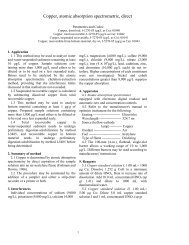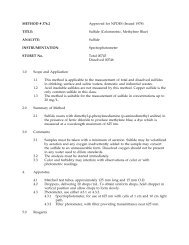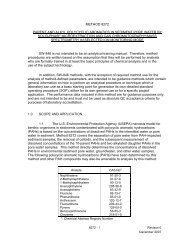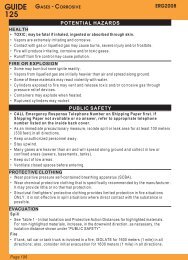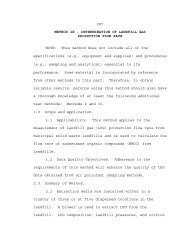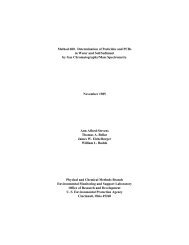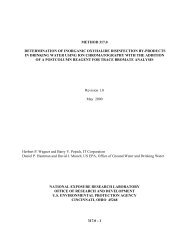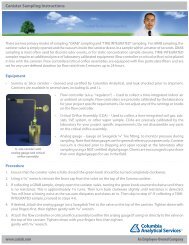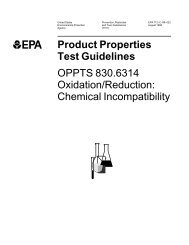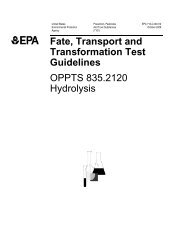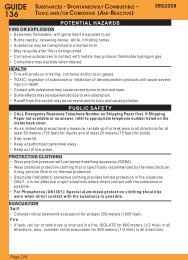View Actual EPA Method 8081A (PDF File)
View Actual EPA Method 8081A (PDF File)
View Actual EPA Method 8081A (PDF File)
Create successful ePaper yourself
Turn your PDF publications into a flip-book with our unique Google optimized e-Paper software.
mean CF ' CF 'nj CF ii'1nwhere n is the number of standards analyzed.7.4.5.3 Calculate the standard deviation (SD) and the RSD of the calibrationfactors for each analyte as:SD 'nj (CF i&CF) 2i'1n&1RSD ' SDCF x 100If the RSD for each analyte is # 20%, then the response of the instrument is consideredlinear and the mean calibration factor can be used to quantitate sample results. If theRSD is greater than 20%, then linearity through the origin cannot be assumed. Theanalyst must use a calibration curve or a non-linear calibration model (e.g., a polynomialequation) for quantitation. See <strong>Method</strong> 8000 for information on non-linear calibrations.7.4.6 Retention time windowsAbsolute retention times are used for compound identification. Retention time windowsare crucial to the identification of target compounds, and should be established by one of theapproaches described in <strong>Method</strong> 8000.7.4.6.1 Before establishing the retention time windows, make sure the gaschromatographic system is operating within optimum conditions.7.4.6.2 The widths of the retention time windows are defined as described in<strong>Method</strong> 8000. However, the experience of the analyst should weigh heavily in theinterpretation of the chromatograms.7.5 Gas chromatographic analysis of sample extracts7.5.1 The same GC operating conditions used for the initial calibration must beemployed for samples analyses.7.5.2 Verify calibration each 12-hour shift by injecting calibration verification standardsprior to conducting any sample analyses. Analysts should alternate the use of high and lowconcentration mixtures of single-component analytes and multi-component analytes forcalibration verification. A calibration standard must also be injected at intervals of not less thanonce every twenty samples (after every 10 samples is recommended to minimize the numberof samples requiring re-injection when QC limits are exceeded) and at the end of the analysissequence. See Sec. 8.4.4 for additional guidance on the frequency of the standard injections.7.5.2.1 The calibration factor for each analyte should not exceed a ± 15 percentdifference from the mean calibration factor calculated for the initial calibration. If a non-CD-ROM <strong>8081A</strong> - 13 Revision 1December 1996



